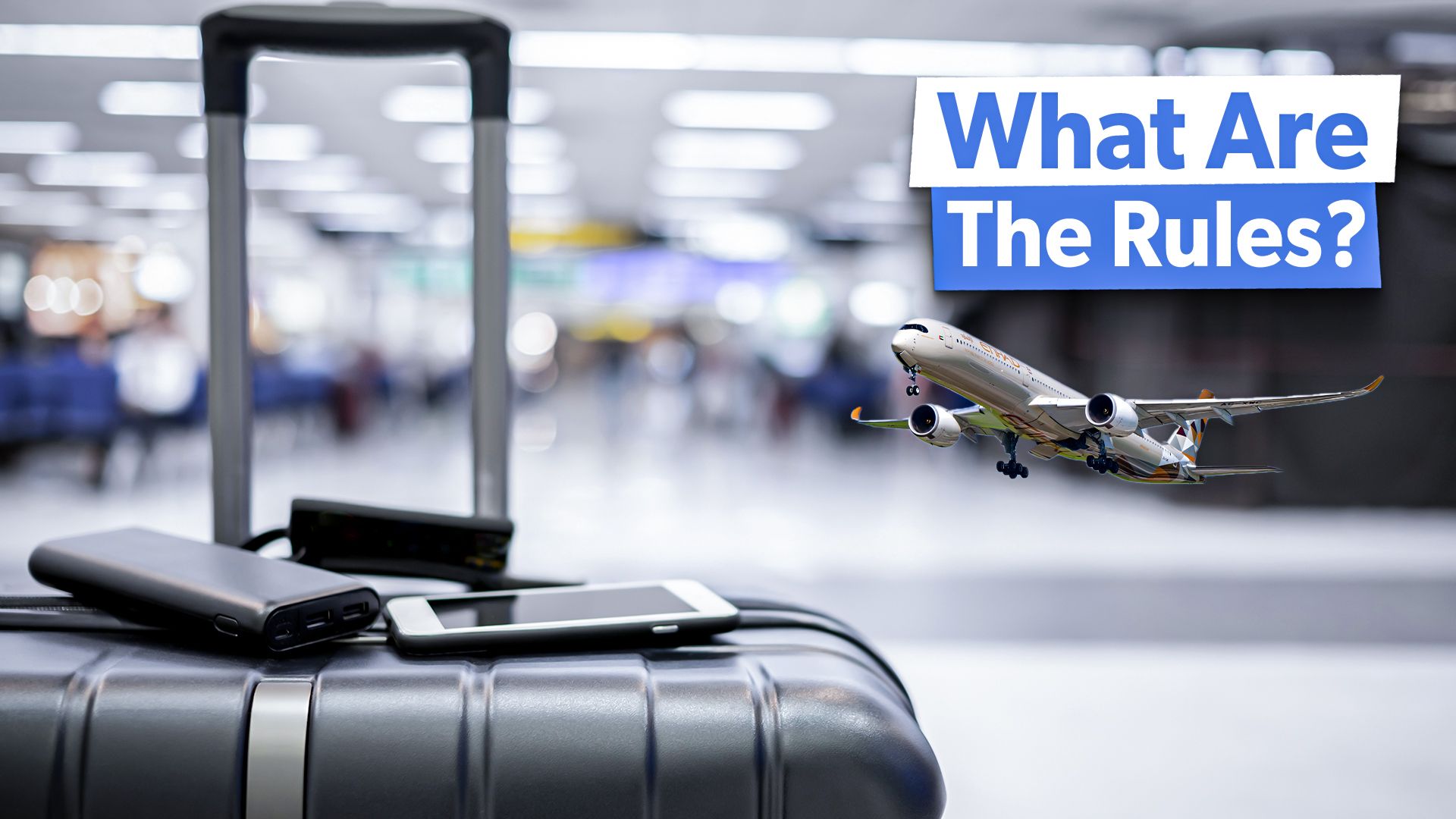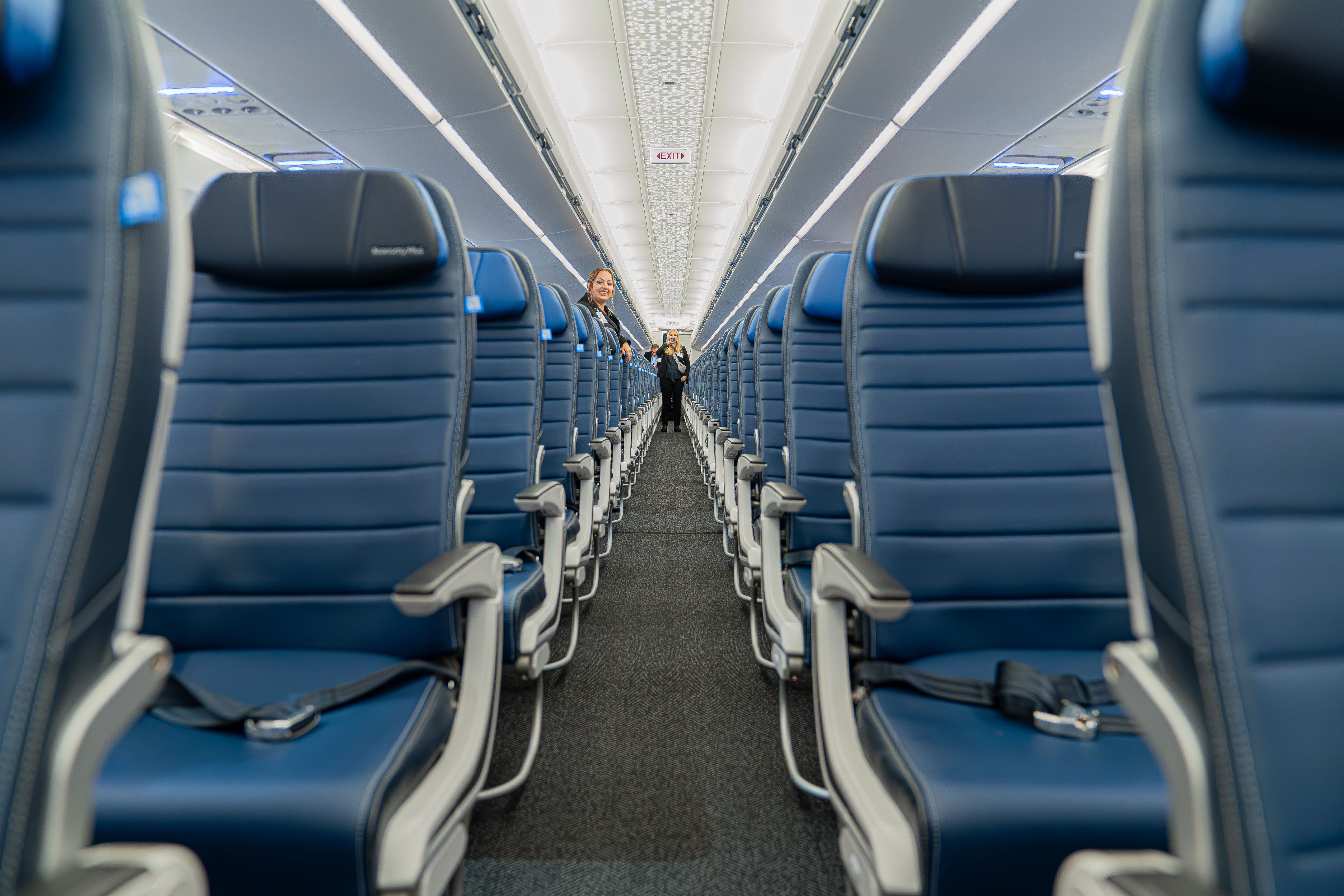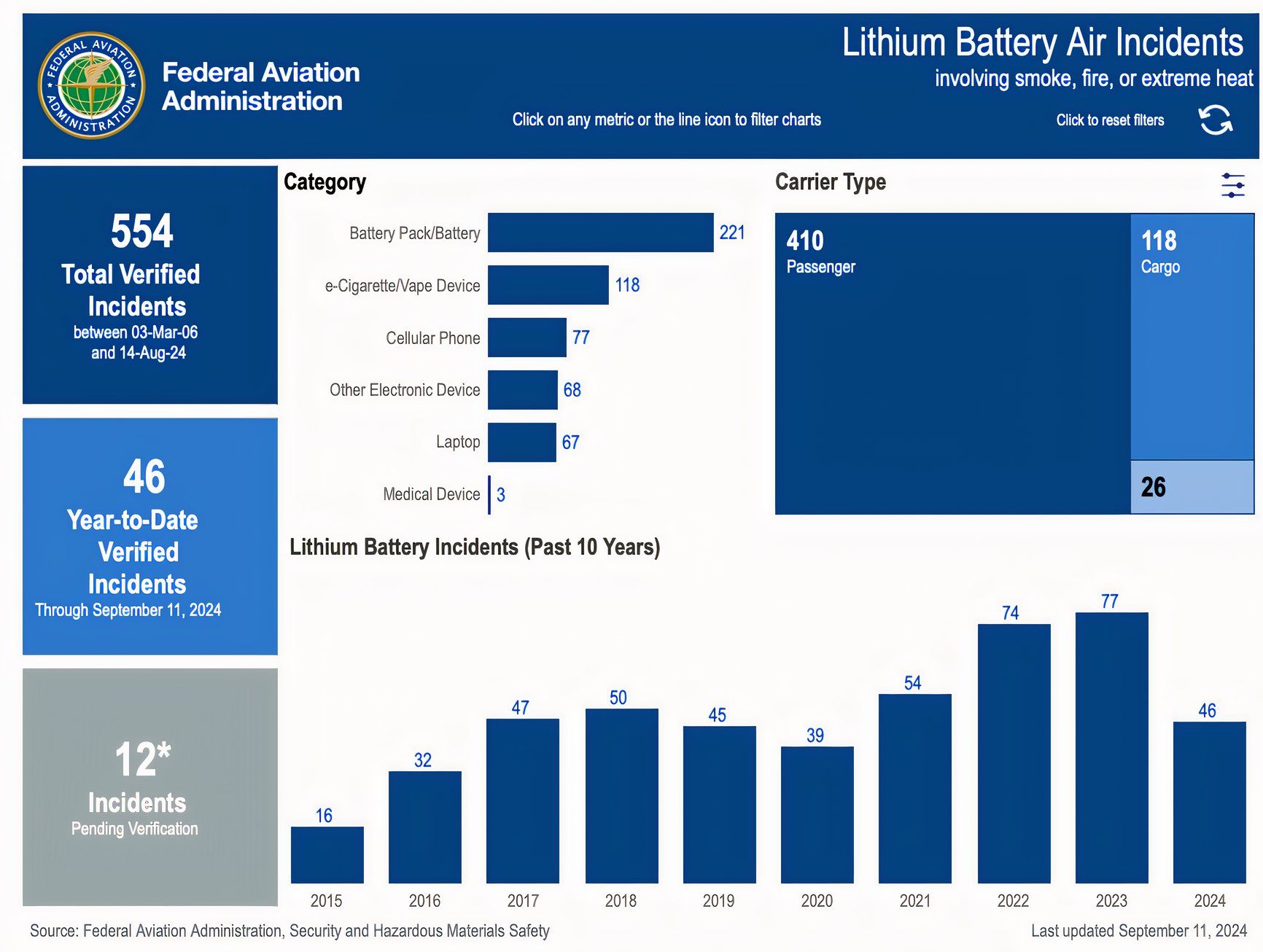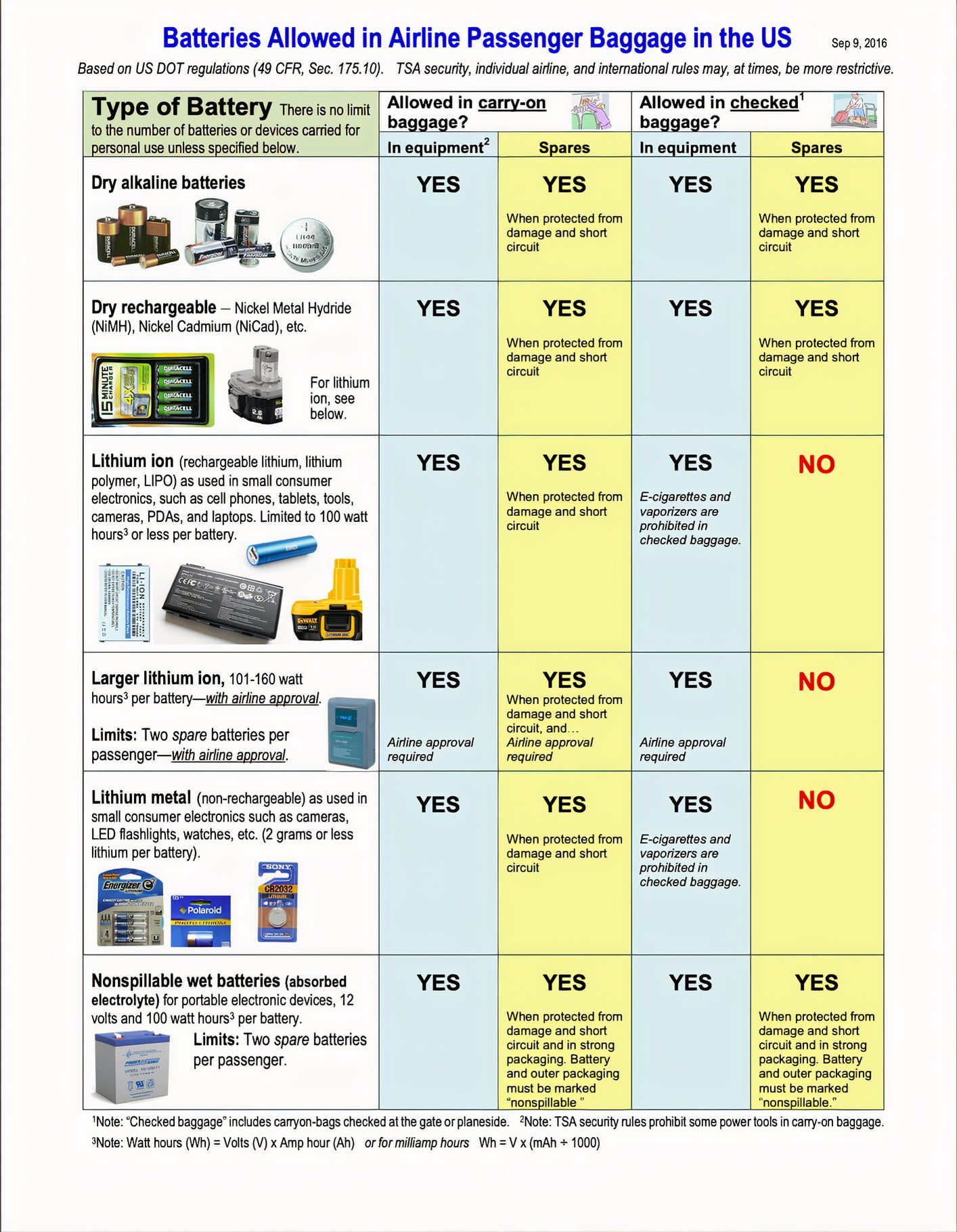In 2024, it is mostly* common knowledge that lithium batteries should not be placed in checked luggage. This is because lithium batteries can catch fire if damaged or if battery terminals are short-circuited. When checking luggage in the United States, airlines ask passengers if the contents of the bag are hazardous, and this includes batteries.
There are exceptions to the rule. Bags can only be checked with lithium metal batteries if the lithium content does not exceed 0.3 grams. Lithium-ion batteries’ watt-hour rating should not exceed 2.7Wh. If any portable electronic devices are placed in checked luggage, they must be powered off.
According to the Federal Aviation Administration
(FAA), all devices with lithium batteries or lithium-ion batteries must be kept in carry-on bags. Devices with lithium/lithium-ion batteries include:
- Cameras
- Smartphones
- Laptops
- Watches
- Portable power banks
- Bluetooth earphones/headphones
- eReaders (like Amazon Kindles)
- Tablets
Why should items with lithium or lithium-ion batteries be placed in carryons?
According to the FAA,
“Smoke and fire incidents involving lithium batteries can be mitigated by the cabin crew and passengers inside the aircraft cabin.”
Despite being in a controlled environment, the FAA advises that devices with lithium batteries should be protected from damage, accidental activation and short circuits. Battery terminals should be in the manufacturer’s packaging or secured with tape and in separate bags.
Photo: Lukas Souza | Simple Flying
If batteries have been damaged or recalled, they should never be transported on a plane (whether in carry-on or checked bags) unless the battery has been removed or secured. The FAA says that airlines can offer guidance on how to carry these kinds of products.
Recent study
Recently, the UL Standards & Engagement Thermal Runaway Incident Program conducted a study on lithium battery incidents with airline and hazardous materials professionals. The goal of the study was to understand the scale of this growing aviation safety issue. According to the study, airlines and cargo operators voluntarily participated.
The study concluded five important things:
- Incidents are at a five-year high
- The average passenger has four rechargeable devices onboard
- Most incidents happen on planes, with devices near the passenger’s seat
- Most incidents were addressed before ever reaching a fire or explosion
- Rechargeable devices are being put in checked luggage
Photo: Delta Air Lines
The study’s results showed that from 2019 to 2023, incidents rose 65% to about 1.5 incidents per 100,000 flights. This number is extremely low, and most incidents are preventable, but it is rising nonetheless. FAA data shows that during the same period, lithium-ion battery fires rose 42%.
About 35% of the incidents that took place last year were due to E-cigarettes. These incidents took place while passengers vaped on flights. Power banks and cell phones are also two significant causes of incidents.
As mentioned above, the average passenger has four lithium/lithium-ion powered devices on board on most flights. Here is what two passengers had to say in the study,
“I travel all the time with my small child, and there’s no way I’m flying all over the world with him when he doesn’t have a Switch or a tablet or something.”
Another said,
“I carry a battery backup [power bank] just because we have so many electronics, and we need to keep them charged!”
What happens in these incidents?
According to the FAA, there have been 554 verified incidents since March 2006. These incidents involved smoke, fire, or extreme heat. The most recent (recorded) incident on a commercial flight was on August 11. An e-Cigarette overheated in a passenger’s pocket on an American Airlines flight. A flight attendant put the device in a thermal containment bag and the passenger did not get it back.
A more severe incident occurred on a United Airlines flight in February 2023. The flight had departed from San Diego International Airport (SAN) when a laptop battery caught fire, injuring four people. Like with the American Airlines incident, the crew on the United flight placed the laptop in a thermal containment bag to stop the spread of the fire.
In a survey group for the study, someone said,
“I don’t ever check bags. I’m hardly ever talking to an agent or anybody. I just go through security and give them my ticket and get on the plane. I don’t think [lithium-ion batteries were] ever brought up in recent times I’ve flown.”
The study discovered that of the people surveyed, five of ten travelers were either unsure or did not see signage or hear announcements about batteries during their travels..
Frequently asked questions
Here are some of the Frequently Asked Questions (FAQs) the FAA has on batteries:
- What batteries are allowed in checked baggage? – According to the FAA, all batteries allowed in carryon luggage except for the ones listed above are allowed in checked baggage.
- How do I determine the watt hours (Wh) rating of a battery? – To determine watt hours (Wh), multiply the volts (V) by the ampere hours (Ah). Example: A 12-volt battery rated to 8 Amp hours is rated at 96 watt hours (12 x 8 = 96). For milliamp hours (mAh), divide by 1000 (to get to Ah) and then multiply by the volts.
- What does “protected from short circuit” mean? – Spare batteries need to be kept in original packaging, a battery case, or a separate pouch or pocket. Taping over terminals on unpackaged batteries also helps secure them from short circuits.








